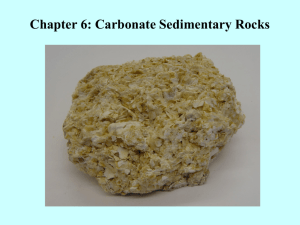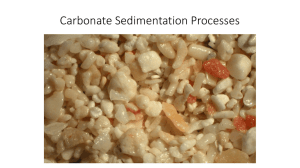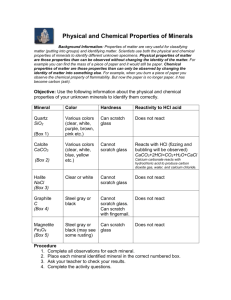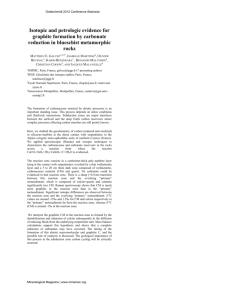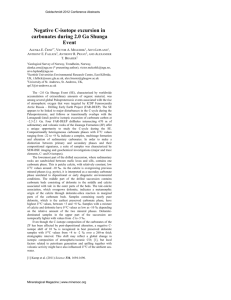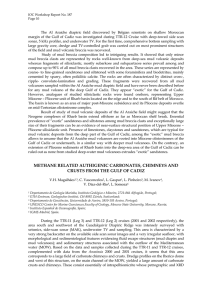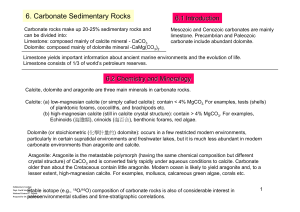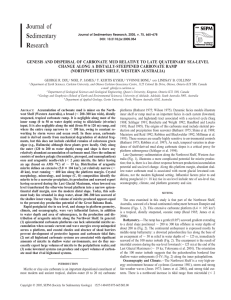Pet16Ls - West Virginia University
advertisement
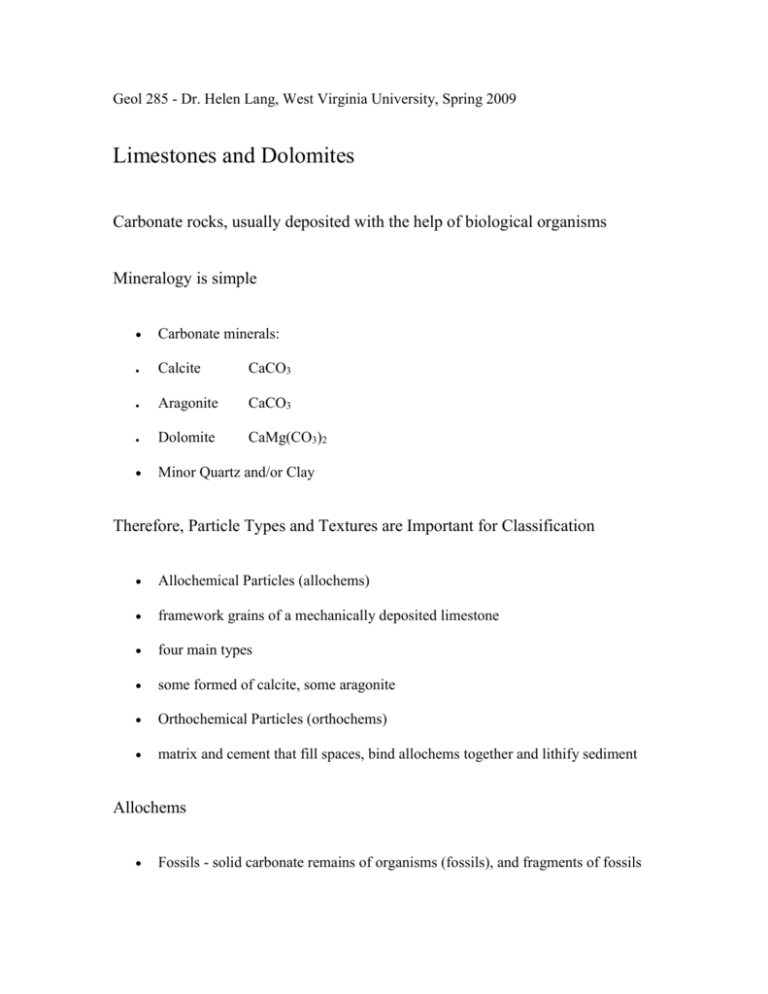
Geol 285 - Dr. Helen Lang, West Virginia University, Spring 2009 Limestones and Dolomites Carbonate rocks, usually deposited with the help of biological organisms Mineralogy is simple Carbonate minerals: Calcite CaCO3 Aragonite CaCO3 Dolomite CaMg(CO3)2 Minor Quartz and/or Clay Therefore, Particle Types and Textures are Important for Classification Allochemical Particles (allochems) framework grains of a mechanically deposited limestone four main types some formed of calcite, some aragonite Orthochemical Particles (orthochems) matrix and cement that fill spaces, bind allochems together and lithify sediment Allochems Fossils - solid carbonate remains of organisms (fossils), and fragments of fossils Peloids - ellipsoidal aggregates of micro-crystalline CaCO3, lack internal structure, mostly fecal pellets of worms, fish, etc. Oöliths - spherical polycrystalline carbonate particles of sand size, with concentric or radial internal structure, commonly have a nucleus for precipitation Limeclasts - fragments of earlier-formed limestone, mostly intraclasts from a local source Fossils - Brachiopod Shell Fossils Peloids Oöids Orthochems Microcrystalline Calcite (Micrite) - CaCO3 mud, disarticulated algal material, carbonate ooze, 1- 4 m diameter [Note difference between lime mud and silicate mud] Coarsely crystalline calcite (Sparry calcite or "Sparite") - calcite cement, precipitated from pore fluid (inorganic ppt.) Usually one or the other, not both Micrite Sparite=coarse crystalline calcite (Cc is stained pink) Non-carbonate Minerals Typically less than 5% terrigenous detritus (quartz, clay, chert) Limestones form only where input of terrigenous detritus (especially mud) is minimal: fresh water changes salinity, organisms are killed or buried by mud Chert is intrabasinal from siliceous organisms or is diagenetic Gulf of Mexico Limestones occur where clastic input is minimal There are two commonly used classification schemes • Folk’s Classification – Based on major allochem and major orthochem – Hard to use without thin sections – Not useful in the field • Dunham’s Classification – Based on structure and percent grains vs. mud – More useful in the field Folk’s Classification Major Allochem (prefix) Major Orthochem (suffix) Fossils Peloids pel- bio- -micrite -sparite Ooliths oo- Limeclasts intra- >90% micrite is just called Micrite Folk Name? Biomicrite Folk Name? Oosparite Folk Name? Micrite Dunham: field classification (see handout)

